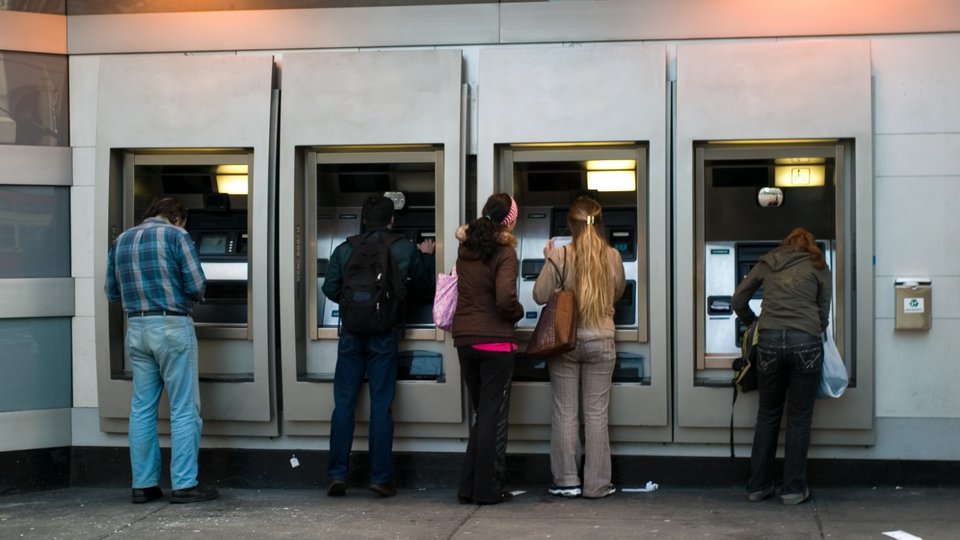Payments
Finding the right exit strategy for independent ATM deployers
Larger companies are snatching up independent ATM deployers. What market forces are driving this consolidation and how can IADs find the best exit strategy?

February 3, 2023 by Bradley Cooper — Editor, ATM Marketplace & Food Truck Operator
The ATM industry is rapidly evolving, as consolidation among large players and especially smaller independent ATM deployers continues to advance. In fact, Visa and MasterCard found that in the last 10 years, the number of IADs fell from 418 to 187.
The reasons behind the exodus are varied, but the list includes increased government regulations as well as the cost of upgrading ATMs.
Larger companies are also snatching up IADs to increase their market share.
However, this trend raises two big questions: What are the market forces driving this consolidation and how can IADs find the best exit strategy?
To learn get the answers, ATM Marketplace reached out via email interviews to Maya Fuentes, SVP of sales and marketing at Paramount Management Group, and Tony Braglio, president of B&B Financial Services, who sold his IAD business to Paramount in 2021.
Q. What are some of the economic forces negatively impacting ATM deployers?
Fuentes: The short answer is rising costs. Specifically, ATM deployers are citing interest rate increases on the cost of cash and increasing fees from armored carriers and banks. Another factor is the cost of ATM hardware and upgrades. Not only does the cost of ATMs go up every year, but regulatory mandates, like the upcoming TR-31 deadline, require IADs to upgrade software or hardware or replace their machines and that is taking a toll on profit margins.
Transaction volume is also an issue. It's no secret the US ATM market is saturated. The war on cash continues and especially after COVID we are seeing many establishments go to cashless payment options. Paramount is actively involved in working to stem the tide through legislative efforts to keep cash relevant in the United States.
Q. What role do bank branch closures play in this?
Fuentes: The increasing number of banks and credit unions eliminating under performing branches is actually a benefit to IADs that offer ATM outsourcing. We still believe ATMs are the single best cash distribution network in the world. When a branch closes, the IAD has an opportunity to continue to service those financial institution clients through branding of existing terminals in the IAD's fleet.
Q. What role do changing consumer payments' preferences play in this, if at all?
Fuentes: As cashless transactions grow in consumer adoption and become easier to access, the more negatively it affects ATM withdrawals. For example, consumers can pay with a phone or even a smart watch in just seconds. The IAD industry needs to find a way to make up for the lack of transactions, however, high inflation and a looming recession may benefit ATM deployers. Historically in an economic downturn, we see an increase in consumers turn to cash to stay on budget and make ends meet. The US has a significant population of unbanked and underbanked population that rely almost exclusively on cash.
Q. What would you say are the top three exit strategies for ATM deployers?
Fuentes: We see a variety of options for today's seller. The most popular would be a straight sale with upfront cash and a standard holdback, or a participative model like the one Paramount offers. In the participative model the ATM deployer is relieved of the financial burdens and headaches of operating the business, while alleviating risk by taking some money off the table and continuing to participate in the revenue stream for maintaining and growing the business.
Q. What drove the partnership with Paramount?
Braglio: I'm a race car guy at heart. Partnering with Paramount has given me the horsepower to close bigger deals and focus on what I do best — sales, business development and enhancing the relationships I have with my clients plus forging new relationships. With technology changing so fast it made sense for me to partner with a bigger company rather than keep dumping money back into the business to keep it growing. Now with Paramount's capital and manpower backing me up, I never have to say no to a deal. I don't have to worry about finding the money to buy equipment, pay for expensive upgrades mandated by changing regulations or the rising cost of armored or cash. Paramount simply makes it happen.
The best part for me personally is that my capital isn't tied up and I'm making as much if not more money now.
Q. What tips would you give to others to make their exit strategy smooth?
Braglio: Organization. If you are really thinking about going down this path, you need to get your books straight. And get all your paperwork and contracts in line, especially the expenses and the cost of cash if you load cash yourself.
Understanding what your true expenses are is the biggest obstacle you'll encounter. If you are unorganized, it will take longer for someone to evaluate what your business is really worth.








